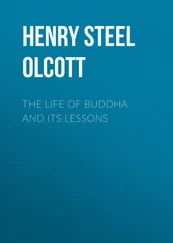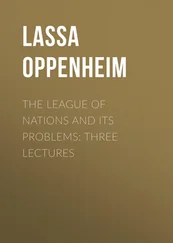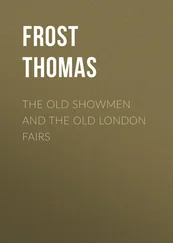William Bryan - The Old World and Its Ways
Здесь есть возможность читать онлайн «William Bryan - The Old World and Its Ways» — ознакомительный отрывок электронной книги совершенно бесплатно, а после прочтения отрывка купить полную версию. В некоторых случаях можно слушать аудио, скачать через торрент в формате fb2 и присутствует краткое содержание. Жанр: foreign_antique, foreign_prose, на английском языке. Описание произведения, (предисловие) а так же отзывы посетителей доступны на портале библиотеки ЛибКат.
- Название:The Old World and Its Ways
- Автор:
- Жанр:
- Год:неизвестен
- ISBN:нет данных
- Рейтинг книги:4 / 5. Голосов: 1
-
Избранное:Добавить в избранное
- Отзывы:
-
Ваша оценка:
- 80
- 1
- 2
- 3
- 4
- 5
The Old World and Its Ways: краткое содержание, описание и аннотация
Предлагаем к чтению аннотацию, описание, краткое содержание или предисловие (зависит от того, что написал сам автор книги «The Old World and Its Ways»). Если вы не нашли необходимую информацию о книге — напишите в комментариях, мы постараемся отыскать её.
The Old World and Its Ways — читать онлайн ознакомительный отрывок
Ниже представлен текст книги, разбитый по страницам. Система сохранения места последней прочитанной страницы, позволяет с удобством читать онлайн бесплатно книгу «The Old World and Its Ways», без необходимости каждый раз заново искать на чём Вы остановились. Поставьте закладку, и сможете в любой момент перейти на страницу, на которой закончили чтение.
Интервал:
Закладка:
But the great wall, imposing as it is because of its length, is inferior in height, thickness and construction to some of the city walls. The wall of the city of Pekin, for instance, is about sixty feet high and forty feet wide at its base, and is kept in excellent repair. The wall encloses what is known as the Tartar city and is nearly four miles square. Huge watch towers rise above each gate, and to give still greater security, the gates open into an enclosed square. While the walls of the city of Pekin are the most substantial in the empire, the walls of Nanking, the former capital, enclose nearly four times as much ground. There was a double object in making the walls of the city so extensive. First, to provide for future growth; and, second, to enable the people to withstand a longer siege. How well the second purpose was served is shown by the fact that during the Taiping rebellion the city of Nanking was besieged for thirteen years. Just outside the walls of the city may still be seen the earthworks thrown up by the imperial army, which sometimes numbered thirty-five thousand.
But it must not be understood that the capital cities were the only ones protected by walls. On the contrary, all the cities are walled; one sees fifteen or twenty of these walled cities on the railroad from Pekin to Hankow and a number of others on the ride down the river to Shanghai.
The agricultural population, instead of occupying individual farms, as in America, is gathered into little villages, each home being enclosed in its own wall. During the summer the people swarm out from the cities and villages and cultivate their little tracts of land with the most primitive tools, carrying the farm products back to their homes on wheelbarrows or in baskets balanced on poles. In the north of China the camel is used for long distance travel, and in the south we saw the water buffalo drawing the plow, but in China less than anywhere else we have been, has man supplemented his strength by the strength of domestic animals.
In the cities the streets are so narrow that travel by ordinary vehicles is impossible. In Pekin there are a few wide streets leading from the gates through the city, and on these a peculiar heavy-wheeled, springless cart is used, but most of the streets are more like alleys in which two 'rikishas can hardly pass. We did not see a full sized horse in the capital city. Some ponies have been brought down from Manchuria (Manchuria is regarded as the personal property of the imperial family and there is a royal monopoly in ponies) but the most popular saddle animal is the patient donkey. It looks ludicrous to see a fat Chinaman perched upon the rump of one of these tiny beasts, but there seems to be entire harmony between the two and the donkey trudges along with little thought of change.
In Canton the streets are not wide enough for the 'rikisha, and both the pony and the donkey are conspicuous by their absence. The sedan chair, borne by coolies, was the only conveyance we saw in a day's tour of the city, and it required some engineering to make any headway with it when two parties met.
Although the business buildings are seldom more than two stories high (the residences are usually only one story), the streets are so narrow and so filled with signs and advertising banners that the sun can scarcely find its way to the pavement. The stores are narrow little stalls with the entire front open to the street. Often there is a little shrine outside the door where incense is burned, and innumerable gods of wood, brass and stone are to be seen.
While in their style of dress and in their institutions the Chinese are much the same throughout the empire, they differ considerably in size and color according to the latitude, and in features according to race history. In the north the people are lighter and larger than in the south, while the men and women of Manchuria have coarser and stronger faces than the Chinese. The people in the north seem to be more vigorous and warlike and less artistic than the people of the south.
The shaved forehead and the queue were prescribed by the Manchurian rulers two hundred and fifty years ago as a sign of subjection, but they are now a source of pride, and no greater humiliation can be inflicted upon one than to cut off his queue. In the northern provinces the men, women and children wear padded clothes, generally of dark blue cotton. The breeches of the men are tied at the ankles and the long, narrow coat reaches almost to the feet. In China the women also wear trousers, but they are more like the American article and the coat worn by the women is considerably shorter than that worn by the men. China is a great place for furs, and the right to wear sable is conferred as a mark of distinction upon the higher officials.
The Manchu women and the Chinese women differ materially. The Manchus, whose ancestors came from Manchuria, still retain the customs peculiar to their section. The hair is stretched over a broad, winglike frame and three hours are required for its arrangement. Flowers, natural and artificial, and ornaments made of feathers, beads and tinsel are profusely used in hair decoration. The Manchu women, except the widows, employ paint and powder with a boldness which would put to shame the most inveterate user of cosmetics in America. In the painting here there is no suggestion of a delicate glow of health; it is a generous application of bright red in two streaks, running from above the eyes to the corners of the mouth. The rest of the face is whitened with rice powder, which does not harmonize with the yellow skin of the neck.
But if the Manchu women show more vanity in the treatment of the face, they at least do not imitate the Chinese women in the binding of the feet, though by wearing skirts and a shoe resting on a block, shaped like a French heel, the size of the foot is concealed.
Foot-binding is probably the strangest form that human pride has ever taken, and it is hard to believe that Chinese women from time immemorial have endured the agonies of foot-binding and forced it upon their daughters. It is not known certainly how the custom originated. One tradition is that it began with a club-footed queen; another that it was designed to distinguish the upper class women from the coolies; and a third tradition has it that it was a scheme devised by the men for keeping the women at home. But whatever causes may have led to the inauguration of the custom, it has become so firmly established that a prominent Chinaman told me that being opposed to foot-binding, he had, when a young man, tried to find a wife with natural feet but was not able to do so. He has in recent years persuaded his wife to unbind her feet and has kept his daughters from undergoing the ordeal.
The process, as described by a physician and as shown in a photograph and model which I secured, is as follows: At the age of five or six the little girl's feet are tightly bandaged; the second, third, fourth and fifth toes being gradually brought back under the sole of the foot; the heel is then drawn forward under the instep and the natural growth of the foot entirely arrested. The medical missionaries report instances in which the foot has rotted away because of lack of circulation. On one of the boats we met an intelligent Chinese merchant who, after condemning the practice of foot-binding and telling us that, in opposition to his wife's wishes and in opposition to the girl herself, he had saved one daughter from foot-binding, compared this custom to that of lacing, affirming that the latter was much more injurious. He also ventured to suggest that Chinese women do not expose their health and their shoulders in decollete gowns, but perceiving that he had discovered a weak spot in our own social armor, I hurriedly changed the subject. But I must reserve for another article the discussion of other characteristics.
Читать дальшеИнтервал:
Закладка:
Похожие книги на «The Old World and Its Ways»
Представляем Вашему вниманию похожие книги на «The Old World and Its Ways» списком для выбора. Мы отобрали схожую по названию и смыслу литературу в надежде предоставить читателям больше вариантов отыскать новые, интересные, ещё непрочитанные произведения.
Обсуждение, отзывы о книге «The Old World and Its Ways» и просто собственные мнения читателей. Оставьте ваши комментарии, напишите, что Вы думаете о произведении, его смысле или главных героях. Укажите что конкретно понравилось, а что нет, и почему Вы так считаете.












